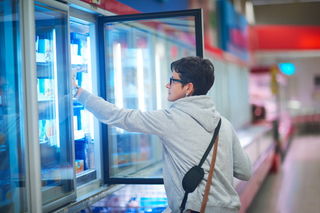Unconscious
Techniques Retailers Use to Entice Shoppers
Your next shopping trip could be a psycholocgical adventure
Posted June 25, 2017

Retailers use a wide variety of psychological strategies to entice shoppers to buy products. With advances in psychology and technology, sales ploys have become increasingly more sophisticated and more effective. Some sales ploys are obvious but most of the time customers are manipulated without their knowledge. The best defense against sales ploys is knowledge. Recognizing some of the sophisticated sales ploys will make your next shopping trip a psychological adventure.
Hard to Open Potato Chip Packages
Have you ever wondered why potato chip packages are so hard to open? The answer is simple. Retailers purposely design packages to be hard to open. When consumers are forced to work hard to get access to food, the food tastes better. Of course, this is an illusion, but if the food seems to tastes better, repeat purchases are more likely. However, if products are too hard to open, the food is seen less tasty. Playing hard to get works in the shopping world as well as in the dating world.
Free Gift Offers
Free gifts are not free. When a free gift is bundled with the purchase of a product, customers are more likely to buy the product as opposed to discounting the product alone. The next time you reach for a two-for-one product or buy one get one free sale, just know that you are the victim of a sophisticated sales ploy. In instances where you normally use both products offered or use the extra twofer product, then it’s a win-win. The retailer sells more products and you have product stored for future use.
End Caps and Islands Increase Sales
End caps and islands are valuable real estate in retail stores. End caps and islands draw the shopper’s attention to the product displayed. Sales promotions combined with end cap or island product placement further increase sales. Middle shelf space is also valuable because people tend to look first at eye level products versus products placed on the top shelf or the bottom shelf. Just like real estate location is everything.
Milk, Eggs and Other Staples
I just need to buy a gallon of milk, eggs, or butter. Why must I walk to the back of the store for this commonly used item? Food staples are always placed at the very back of the store. This is for a reason. Retailers want you to walk by the many products between the front door and the back of the store. The probability that you will buy additional items significantly increases if you see more items on your way to get a gallon of milk. If you don’t want to be enticed into buying additional products look straight ahead and walk with purpose to the milk cooler. The return trip to the cashier may is just as enticing, so walk with a singular purpose. The upside is that a little exercise may be helpful.
Emotional Spice
Words such as “Home Style,” “Homemade,” and Home Cooked” printed on food labels add emotional spice to food products. Words like these remind people of when they were young and their mothers cooked meals in warm, cozy kitchens. The words “Grandmother’s” or “Grandma’s” also activate memories of the sights, sounds, and tasty smells of grandmother’s kitchen. The same good feelings people feel when they become nostalgic are transferred to the products that print these words on food packages. To counter this marketing ploy, you should recognize the subconscious power of emotional words and look analytically at the product to see if it meets your needs.
Freezer Frame of Mind
A freezer frame of mind is when consumers are enticed to purchase multiple grocery items because they are on sale. The logic is simple. I’ll use one of the items now and freeze the rest of the items for later consumption. As time passes, many people forget what’s at the bottom of their freezers. The food goes unused for many months and eventually gets thrown out when the freezer finally get cleaned. Grocers don't mind that food is wasted. The goal is to entice you to buy more groceries.
Folded Clothes
Clothes are stacked on tables in neat, folded rows for two reasons. First, the retailer wants you to touch the garment. If you like the feel of the fabric, then you subconsciously become more emotionally attached to the garment and are more likely to buy the garment. Second, folded clothes create curiosity. Customers often wonder what the rest of the garment looks like. In order to find out, the customer must unfold the garment. In doing so, the customer is forced to feel the garment. If the garment feels good to the touch, a sale is more likely. The opposite is also true. If a garment feels bad, then a sale is less likely because the customer develops a negative emotional impression of the garment. To increase customer touch, retailers place small circular cutouts with the words “Touch me,” “Feel me,” or “Try me” to encourage customers to develop a subconscious emotional attachment to the product.
For tips and techniques to initiate, maintain, or repair relationships refer to The Like Switch: An Ex-FBI Agent’s Guide to Influencing, Attracting, and Winning People.


